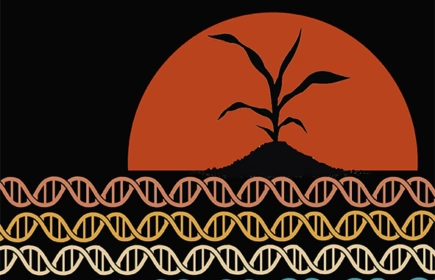Experiments involving recombinant DNA (rDNA) began in laboratories just over 50 years ago. At this time in the early 1970s, scientists were beginning to understand how genes functioned and worked within organisms. This early research involved experiments using e. coli as its genetic sequence was conducive to research, as the genetic sequence of other organisms was more complex, making research more challenging.
Where did Biotech start?
In the waning days of February 1975, experts from around the world gathered at the Asilomar Conference on rDNA in California to discuss what they knew about this innovative stream of research, especially concerning the safety of the experiments. Of a group of more than 140+ professionals and media representatives, the experts agreed the technology was safe and proposed guidelines for rDNA experiments that would evolve into the regulatory frameworks for the commercialization of genetically modified (GM) crops in the mid-1990s.
Within just a few years of the Asilomar Conference, GM products began to enter the market, with one of the first being GM insulin in 1982. Microbial rDNA research provided numerous industrial technologies and products, such as GM yeasts for baking, GM rennet for making cheese, and other technologies that improved the effluent from manufacturing processes. As these products were reaching the market, plant scientists were busy working to improve crop varieties that reduced chemical use and improved disease resistance in plants. These first GM crop varieties were commercialized in the mid to late 1990s.
The application of biotechnology in more complicated living systems, as developing GM versions of livestock and fish has proven to be challenging. Not only have there been lengthy regulatory approval timeframes there are also numerous regulatory barriers to commercialization. Despite these challenges, it has not meant that society has chosen to sidestep biotechnology. Biotechnology innovations in human health have provided many benefits to society, witnessed by the rapid development of Covid-19 vaccines just a few years ago.
Celebrating 50 years in Trends in Biotechnology

Assessments of biotechnology innovation over the past 50 years have just been published in recognition of this important milestone anniversary. The Journal Trends in Biotechnology published a Special Issue of four articles addressing innovation benefits and challenges for human health, microbial science, plant and animal science, and the importance of risk-appropriate, science-based regulation.
Human health and genetic technology
The article on the human health benefits of biotechnology highlights how the initial regulatory views were extremely risk averse and enacted stifling regulations, which contributed to deterring research and product commercialization. However, as knowledge increased, these early regulations were reduced and removed. This made way to allow products to provide benefits more readily to individuals. Biotechnology has provided new ways of producing vital vaccine and drug compounds, through more efficient and cheaper methods, especially for vaccine production. These innovations were readily witnessed with the incredibly rapid development of COVID-19 vaccines, as vaccines were developed and of sequencing the virus’ genome.
Recombinant DNA: Unlocking untapped microbial potential for innovation in crop agriculture
Advances in, and benefits from, microbial science have been vast and plentiful. However, these benefits have been restricted to contained laboratory or industrial site uses. Unrestricted commercialization into the environment has proven to be next to impossible to date. There is vast untapped potential for GM microbes to provide soil health benefits such as nitrogen fixation and improved soil nutrient availability. Potential future applications include soil remediation, such as contributing to the removal of harmful substances from soil following the spills. The lack of regulatory harmony between countries is identified as a barrier to innovation research for microbial biotech research.
Regulation of animal and plant agricultural biotechnology
Despite the many benefits of GM crops, their regulation has been over-regulated for 30 years. The article on animal and plant biotech benefits highlights that the development of process-based regulations and the Cartagena Protocol on Biosafety have proven to be significant barriers to innovation and improved food production in far too many countries. Yield improving GM crops have been restricted in many food insecure countries due to faulty regulations that enacted risk inappropriate regulations and even outright bans. While some GM animals have recently been commercialized, this has been a lengthy, slow, and costly process. Regulatory barriers to the commercialization of GM livestock have existed for many years, predominantly due to the lack of large private firms to champion the development of risk appropriate regulatory frameworks.
Risk-appropriate, science-based innovation regulations are important.
The fourth article deals specifically with the importance of risk appropriate, science-based regulation for the successful commercialization of biotechnology innovations. Further highlighting the damages to improved food security from the Cartagena Protocol on Biosafety coming into effect in the early 2000s. The experts participating in the Asilomar Conference were firm in their belief that biotechnology is a safe technology, requiring minimal regulation, however, regulatory frameworks, particularly those within the European Union are entirely risk inappropriate, resulting in the stifling of biotechnology innovations that benefit societies. Risk inappropriate regulations focus on precaution, using the inability to be fully knowledgeable about unknown potential risks at the sound rationale for preventing the commercialization of innovative products and technologies.
What we need to remember, no matter what standpoint we have on biotechnology or any form of science, it is scientifically impossible to know every single aspect of any product, process, or technology. All that can be done is to compare the potential for risk from something new to the risk of what is currently being used in the marketplace and if there is no change in risk, then commercialization needs to be allowed. Scientific evidence readily confirms the risks from biotechnology do not differ from the risks of products, processes, and technologies that don’t involve biotechnology. In reality, the use of biotechnology commonly reduces risks. Perhaps in the near future, we will learn other news about biotechnology, but in today’s knowledge and science, its risks are no greater than other products, processes, or technologies that we trust.
A milestone at 50
Fifty years of biotechnology innovation and benefits represent a significant milestone. The key message from this Special Issue is that regulatory barriers needlessly delay human health, food production, and environmental benefits, making all consumers worse off. To ensure all these aspects are capable of receiving the fullest level of benefits as possible, barriers to innovation need to be removed, especially those that aren’t based on empirical evidence.
Trends in Biotechnology
Editors Stuart J. Smyth & Matthew J Pavlovich
This journal issue of Trends in Biotechnology explores the relationship between regulation and innovation in biotechnology, particularly in agriculture and human health. It reflects on the 50-year history of genetic modification since the Asilomar Conference, highlighting the initial progress facilitated by science-based, risk-appropriate regulations. However, the issue also critiques the increasing regulatory restrictions over the past 25 years, which have hindered innovation due to political rather than scientific concerns. The articles within discuss risk assessment in genetically engineered crops and livestock, the regulation of pharmaceuticals derived from GM organisms, and regulatory uncertainty surrounding GM microbes. The issue argues that overly cautious regulations have impeded advancements in food security and health, and it calls for a return to science-based policymaking to support future innovations.
Aims & Scope of Journal
Trends in Biotechnology is a monthly journal that publishes innovative applications of biology as useful technologies. Our articles should describe biobased solutions to important problems and should emphasize how to engineer or adapt living systems for societal benefit. Specific application areas include human health and well-being, renewable energy, food and agriculture, natural resources, and production of bulk and fine chemicals.
A Trends in Biotechnology article should not merely summarize lab-scale research; it should think carefully about implementation, scale-up, and “real world” implications. A key consideration is how to translate or commercialize experimental applied biology to products, industrial platforms, therapies, or devices.
Scientific areas of interest include but are not limited to the following:
• Synthetic biology
• Genome editing
• Tissue engineering and biofabrication
• Metabolic engineering
• Cellular and microbial engineering
• Plant trait improvement and agricultural engineering
• Biomanufacturing
• Biosensors and bioelectronics
• Biofuels, bioenergy, microbial fuel cells
• Cellular agriculture and alternative nutrients/proteins
Trends in Biotechnology publishes review articles, opinions, research articles, and reports (or short research articles) on these topics. We also welcome shorter commentary articles on law and intellectual property, policy and regulation, bioethics, scientific communication, and the economics of biotechnology. Additionally, we consider resource articles describing novel approaches for developing biobased technologies.
Trends in Biotechnology has a diverse audience that reflects its intentionally broad scope. Our readers include biologists, engineers, chemists, pharmacologists, computer scientists, and physicians, and they work in academic, clinical, industrial, NGO, and governmental settings. Therefore, we emphasize accessible articles that are easy to read, and we encourage authors to keep in mind that many readers may not be familiar with their field's specific terminology.
Visit the Cell Press website for more information about Trends in Biotechnology - https://www.cell.com/trends/biotechnology/home
Risk-appropriate, science-based innovation regulations are important
- Karinne Ludlow, Jose Falck-Zepeda, Stuart J. Smyth
Pages 502-510
Regulation of animal and plant agricultural biotechnology
- Simona A. Lubieniechi, Alison L. Van Eenennaam, Stuart J. Smyth
- Pages 511-521
Human health and genetic technology
- Hans-Georg Dederer
- Pages 522-532
Recombinant DNA: unlocking untapped microbial potential for innovation in crop agriculture
- Aranksha Thakor, Trevor C. Charles
- Pages 533-539


